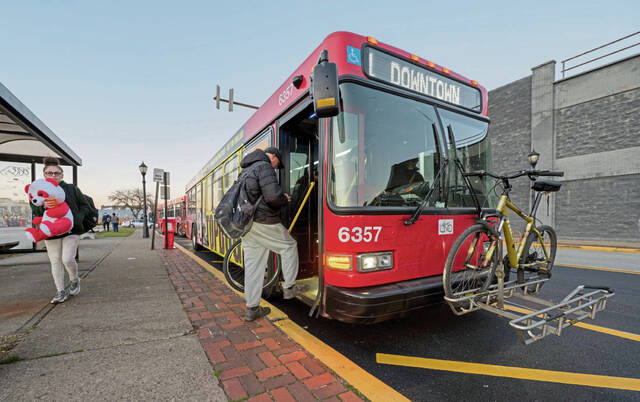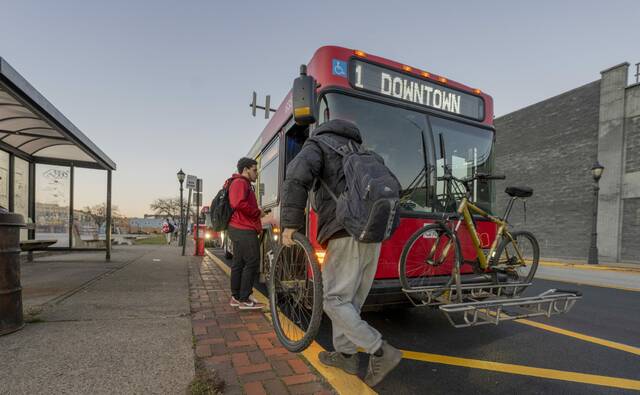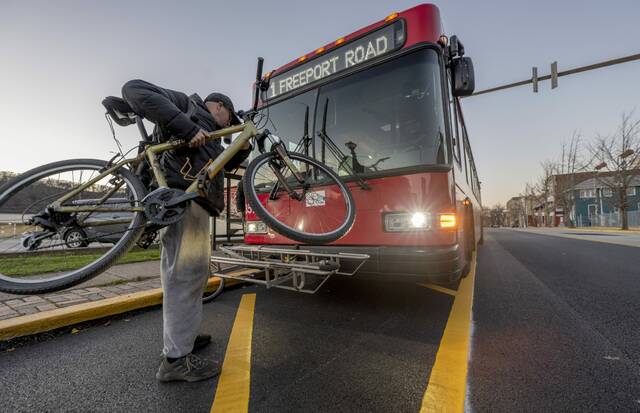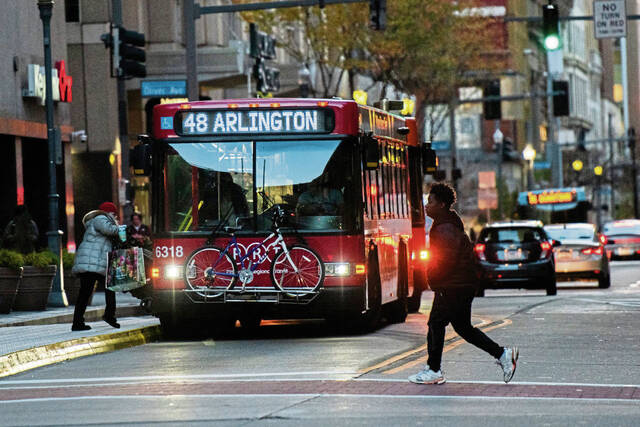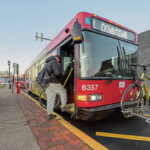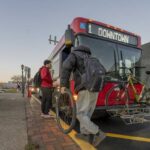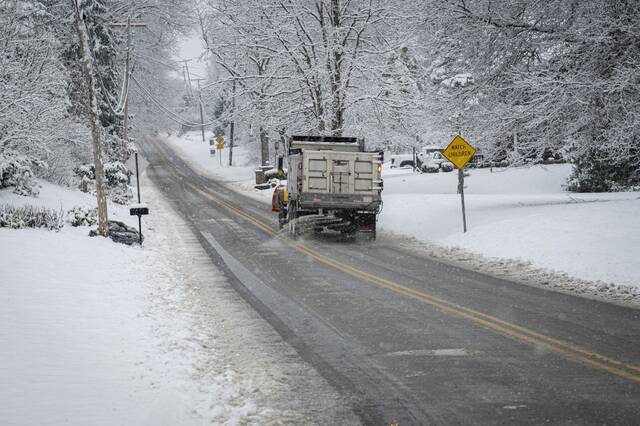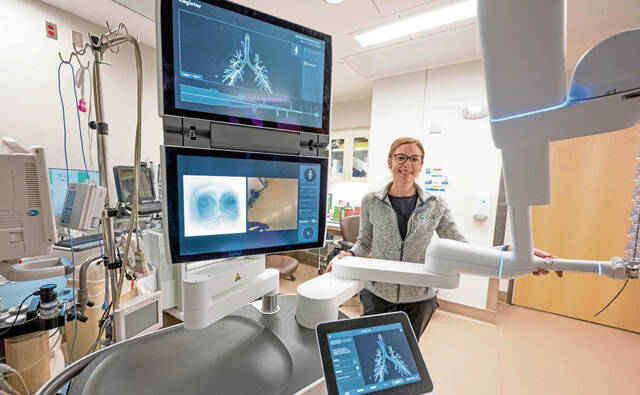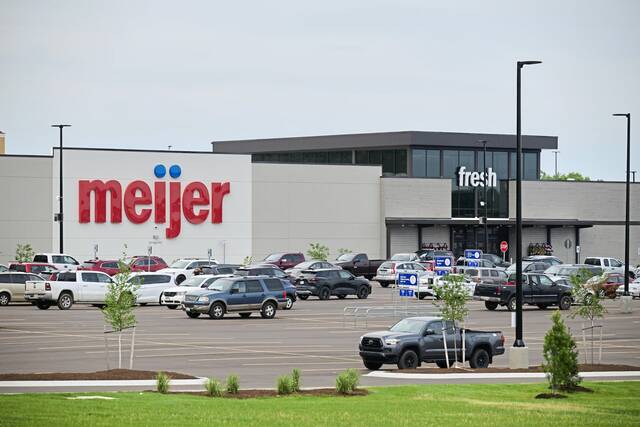Pennsylvanians woke up Thursday to a $50.1 billion state budget that makes additional investments in public schools and creates a new tax credit for lower-income people but provides no increase in funding for public transportation.
Noticeably absent from the budget is Gov. Josh Shapiro’s proposal to increase the portion of the Sales and Use Tax dedicated to public transit.
“The lack of new investment in public transit is a major gap that must be addressed,” said Adam Brandolph, Pittsburgh Regional Transit’s deputy chief communications officer.
In June, Shapiro proposed increasing the portion of sales taxes used for public transit from 7.68% to 9.43%, which would have generated $292 million in new annual funding next year and more than $330 million annually by the 2029-30 fiscal year. PRT would have seen more than $40 million in additional funds.
In September, after the state failed to pass a budget by the July 1 deadline, PennDOT granted permission to use $106.7 million in PRT’s capital funding to avoid a 35% reduction of service and a 10% increase in fares that would have started in February.
“It’s robbing Peter to pay Paul,” Brandolph said.
Shapiro approved a similar request from the Southeastern Pennsylvania Transportation Authority in September allowing the agency to use up to $394 million earmarked for capital improvements to cover operating costs.
In a statement reported by WHYY, CEO Scott Sauer said SEPTA stands “ready to work with lawmakers and the governor on a comprehensive transit funding solution.”
“While we have known for some time that new transit funding was unlikely to be included in this year’s state budget, it is disappointing to see another year pass without action to address the immediate day-to-day needs of our riders and increasingly critical short- and long-term infrastructure investments,” Sauer said.
Without any new source of funding, the future of PRT is unknown, Brandolph said.
“It leaves us in a precarious situation where we don’t necessarily know what our future looks like after a few years,” Brandolph said. “Right now, everything looks OK, but, in two years, we’re back to running deficits.”
Brandolph said PRT intends to continue working with lawmakers to advocate for more investment in public transit. Without any additional investment, the cuts PRT faced in September would need to be reconsidered, directly affecting the 130,000 people PRT services each day.
“Should there not be a long-term solution on the horizon in the near future, those cuts would either be back on the table or worse,” Brandolph said.
Unlike PRT or SEPTA, Westmoreland Transit Authority did not threaten any cuts as part of the budget talks.
Executive Director Alan Blahovec told TribLive on Thursday that Westmoreland transit wasn’t heavily impacted by the state budget impasse. The authority continued to receive some funding through a state trust fund and utilized remaining covid-relief money that allowed it to keep its current level of service.
“It really had no effect on us,” Blahovec said of the state budget impasse.
The authority operates a fixed-route bus system that includes 15 daily routes throughout Westmoreland County and commuter service to Pittsburgh. It also operates Go Westmoreland, a subsidized door-to-door shared-ride program for seniors, disabled people and other residents who qualify for social service programs.
Laura Chu Wiens of the transit-advocacy group Transit for All PA Coalition said the budget’s lack of new investment toward public transit is a failure.
The group works throughout Pennsylvania’s 67 counties to ensure public transit is available and reliable for residents.
Chu Wiens said, since 2019, Allegheny County has lost 20% of public transit service.
“We look forward to continuing to work on long-term public transportation funding, a critical issue that was not able to be addressed in this budget,” Allegheny County spokesperson Abigail Gardner said in a statement.
Looking beyond larger agencies like PRT and SEPTA, the lack of progress leaves smaller authorities in less populated areas vulnerable, she said.
Brandolph said PRT and SEPTA were feeling the hit first, but funding problems are going to affect every level of transit agency.
Within the next 18 months, the already strict transit system budgets in communities including Lehigh Valley, Lancaster and State College will hit their fiscal cliffs and begin cuts.
“Our highest priority going forward the next weeks and months is finding a solution on funding transportation,” Sen. Jay Costa, D-Forest Hills, told TribLive.
In an effort to battle the ongoing funding shortfall, the coalition worked with lawmakers to introduce revenue sources being considered in the state Senate and House, Chu Wiens said.
“We’ve put forward a funding solution that would provide new dedicated sources of revenue and expand services beyond Pittsburgh and Philadelphia by 10%,” Chu Wiens said.
The first method is to increase car rental and lease fees. Both were introduced in the early 1990s, and their rates have not been changed since. Chu Wiens said since the money from those fees is already allocated to public transit funding, the increase would not require a change in legislation.
The second method is to introduce a statewide ride-hailing tax that would be implemented in ride-share transfers such as Uber and Lyft.
“(The tax) could generate hundreds of millions of dollars in funding,” Chu Wiens said.
TribLive staff writers Rich Cholodofsky and Justin Vellucci contributed to this article.


